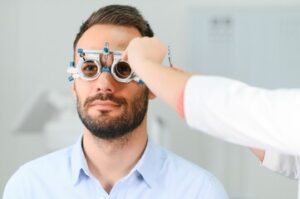More homeowners are adding garages because they want durability, security, quiet operation, and easy maintenance. Insulation and aesthetics are also important if the living space is above the garage.
The most popular garage doors are sectional styles, which have panel sections joined together on hinges. When open, they sit parallel to the ceiling and follow a curved track above the door opening. Contact Norman Garage Door now!

We take garage doors for granted, but they result from a long history of innovation. From early wooden doors that swung open on hinges to today’s high-tech automated systems, the evolution of these structures has transformed how we live our lives. The story of the garage door is a testament to human ingenuity and the desire to create a better life for ourselves.
When automobiles became commonplace in America, people realized they needed a space to store their cars while they were not being driven. At first, they kept their cars in carriage houses, the traditional outbuildings where people stored their horses and buggies. However, these structures were inconvenient and often had doors that were heavy to operate manually. In addition, they were often cluttered with horse manure, which made the cars smell bad.
Cars began to proliferate, and large public garages were built. Eventually, these garages were overflowing and the doors of the buildings were rotting due to constant wear from being opened and closed. As a result, people started to build private garages for their vehicles. These were often a converted shed or barn that had a door for easy access to the vehicle. These early doors operated just like the ones on carriage houses and used hinges to swing open. They also used Z and X-shaped designs that helped prevent sagging.
The first modern garage door was invented in 1921 by C.G. Johnson from Hartford City, Indiana in the United States. This upward operation garage door was the precursor to today’s overhead sectional doors. These doors folded while running parallel to the garage ceiling, allowing them to take up much less space than swinging ones. The new doors were still heavy and difficult to lift, but they were a major improvement over previous styles of garage doors.
After World War II, architects began to design homes with attached garages to make it easier for drivers to get their cars in and out of the garage without having to leave the comfort of their home. The garages could accommodate multiple larger vehicles, making it practical for most families to own two cars.
Materials
The material of the garage door is one of the biggest choices to make. Many factors should be considered when choosing the best material, including your local weather conditions and your desired maintenance level.
Wood garage doors are popular amongst homeowners who want a more traditional look for their home. Wood is a strong and long-lasting material that doesn’t rust. However, it is also more expensive than steel and aluminum. Wood also requires more frequent staining and painting than other materials.
Steel garage doors are a good choice for homes in areas with harsh weather conditions. These durable and low-maintenance doors are available in a variety of styles. Many steel door models feature polyurethane insulation, a layer of foam that improves the energy efficiency of the garage door and helps regulate the indoor temperature. Steel is not inherently insulating, so it’s important to select a steel door with insulation if you want your garage to be energy efficient.
Aluminum garage doors are another option that can offer the durability of steel at a lower cost. This lightweight material is resistant to corrosion, so it’s great for coastal locations. However, aluminum does dent easily, so it’s important to choose a garage door with an impact-resistant design.
Cellular vinyl (PVC) is a durable and moisture-resistant material that doesn’t need to be painted, but can be if you prefer a different color. PVC is also easy to clean and maintain, and it offers resistance against scratches, dents and warping.
When considering the type of commercial garage door to purchase, think about what your business needs are. For example, aesthetics may be more important if you’re selling cars in your showroom, while durability and longevity are necessary for a warehouse. Then consider the local climate conditions to ensure the garage door you purchase will stand up to harsh weather and humidity. A professional will be able to help you choose the right garage door for your unique needs.
Styles
Garage doors are more than just utilitarian, as they can enhance the curb appeal of your home and serve as a stunning focal point. The style of your garage door will depend on your home type, design preferences and budget. There are several common styles available to choose from when selecting a new garage door.
Traditional garage doors are made of steel and feature symmetrical raised rectangle panels with a standard paint finish. They are popular because they provide a timeless look that complements nearly any home design and can be easily customized with window inserts, hardware, textures, and colors.
Contemporary garage doors make a bold statement with clean lines and minimalist designs. They suit homes with open-plan living and large windows. They can be enhanced with insulated options to add energy efficiency.
Sectional garage doors consist of panel sections that are connected with hinges. Each section rolls inside a vertical track on each side of the garage door opening and is secured to the frame with cables that run from a pair of high-tension springs above the door opening. This allows the door to be rolled up and down vertically, saving space and allowing it to sit above ground level when fully open.
Wood carriage house doors with A- or V-bucks pair well with Tudor-style homes, as they compliment the facade’s half-timbering. These doors can be accentuated with decorative hardware, including strap hinges, latches, pull handles, ring pulls, and clavos.
The more traditional style of garage doors, wood stile and rail, resembles a historic barn door. This style of garage door consists of two separate panels that hinge at the center to swing out for wide clearance when entering or exiting the vehicle. The panels can be accented with glass and decorative hardware to create a beautiful, rustic aesthetic.
Another option for a contemporary garage door is a roller style, which is designed with 2 “-3” steel slat sections that roll around a drum above the garage door opening. This garage door style is the least expensive but not as versatile as other types of residential garage doors.
Installation
A garage door is a large and heavy piece of machinery that needs to be properly installed for safety and proper function. The process is complex and requires special tools and skills. This is why it is a good idea to hire professionals for installation. A professional will also make sure that the door is properly balanced so it opens and closes evenly. This will save you time and money in the long run.
Before the installers begin work, they will inspect your garage and determine the best type of installation for you. They will then make a schedule for the job. This will ensure that your garage door is ready when you need it. You should be home on the day of the installation so you can communicate with the technicians if there are any questions or concerns.
After a few weeks, you should have a garage door that is safe and functional. If you have any questions or problems with the installation, contact your local dealer or the manufacturer of your garage door. They will be able to help you resolve any issues.
The first step in the process is to measure your garage door opening and order the correct size of panels. It is important to use a tape measure to be accurate when measuring. The panels will be slightly smaller than your opening to ensure that they fit perfectly. When the panels arrive, they should be unboxed and laid exterior-side down on a bench or sawhorses.
Next, install the hinges and rollers on each panel. Start with the bottom panel, then work your way up, checking and adjusting each section for level as you go. Once the track is hung, attach it to the brackets using 5/16″ lag screws.
Once the track is in place, you can lay the roller wheels on top of it. If there is any rub or friction, shim the bottom of the roller track until it is smooth.
When you’re done, the track and rollers are in place, and it is time to install the garage door opener. Follow the garage door opener manufacturer’s instructions to connect the motor unit, trolley, and chain or belt.








